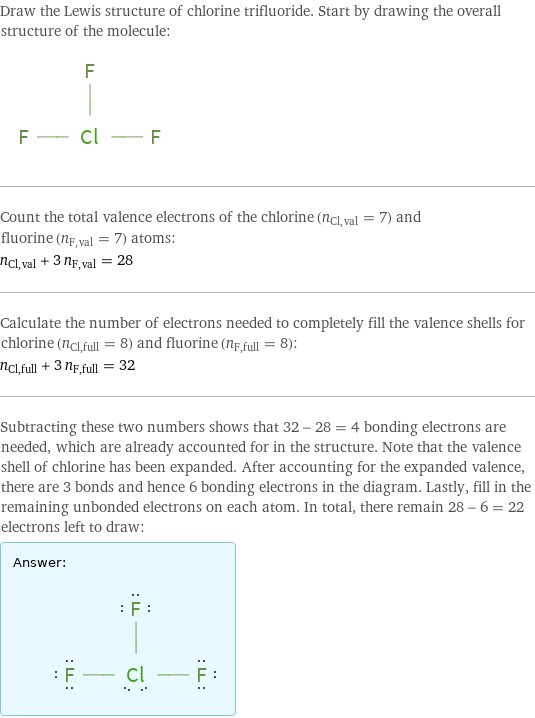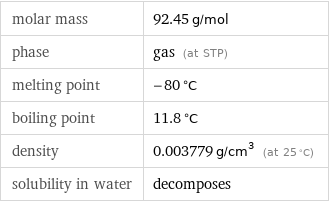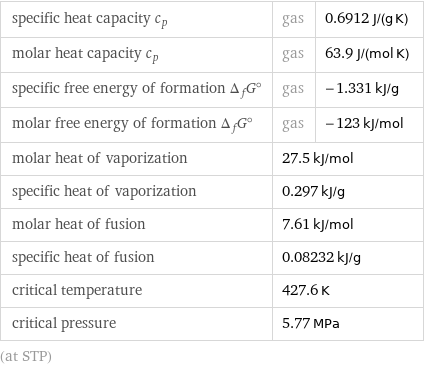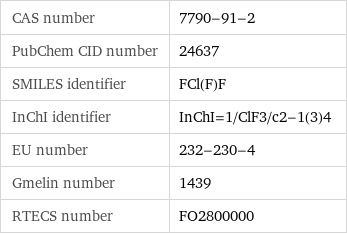Input interpretation

chlorine trifluoride
Chemical names and formulas

formula | ClF_3 name | chlorine trifluoride alternate names | chlorine fluoride | chlorotrifluoride | trifluorure de chlore mass fractions | Cl (chlorine) 38.3% | F (fluorine) 61.7%
Lewis structure

Draw the Lewis structure of chlorine trifluoride. Start by drawing the overall structure of the molecule: Count the total valence electrons of the chlorine (n_Cl, val = 7) and fluorine (n_F, val = 7) atoms: n_Cl, val + 3 n_F, val = 28 Calculate the number of electrons needed to completely fill the valence shells for chlorine (n_Cl, full = 8) and fluorine (n_F, full = 8): n_Cl, full + 3 n_F, full = 32 Subtracting these two numbers shows that 32 - 28 = 4 bonding electrons are needed, which are already accounted for in the structure. Note that the valence shell of chlorine has been expanded. After accounting for the expanded valence, there are 3 bonds and hence 6 bonding electrons in the diagram. Lastly, fill in the remaining unbonded electrons on each atom. In total, there remain 28 - 6 = 22 electrons left to draw: Answer: | |
Basic properties

molar mass | 92.45 g/mol phase | gas (at STP) melting point | -80 °C boiling point | 11.8 °C density | 0.003779 g/cm^3 (at 25 °C) solubility in water | decomposes
Units

Gas properties (at STP)

density | 0.003779 g/cm^3 (at 25 °C) molar volume | 24460 cm^3/mol dynamic viscosity | 9.182×10^-5 Pa s (at 2727 °C)
Units

Thermodynamic properties

specific heat capacity c_p | gas | 0.6912 J/(g K) molar heat capacity c_p | gas | 63.9 J/(mol K) specific free energy of formation Δ_fG° | gas | -1.331 kJ/g molar free energy of formation Δ_fG° | gas | -123 kJ/mol molar heat of vaporization | 27.5 kJ/mol | specific heat of vaporization | 0.297 kJ/g | molar heat of fusion | 7.61 kJ/mol | specific heat of fusion | 0.08232 kJ/g | critical temperature | 427.6 K | critical pressure | 5.77 MPa | (at STP)
Chemical identifiers

CAS number | 7790-91-2 PubChem CID number | 24637 SMILES identifier | FCl(F)F InChI identifier | InChI=1/ClF3/c2-1(3)4 EU number | 232-230-4 Gmelin number | 1439 RTECS number | FO2800000
NFPA label

NFPA label

NFPA health rating | 4 NFPA fire rating | 0 NFPA reactivity rating | 3 NFPA hazards | oxidizing agent | water reactive
Toxicity properties

short-term exposure limit | 0.4 mg/m^3

long-term exposure limit | 0.4 mg/m^3 (over 8 hours) RTECS classes | human data | primary irritant